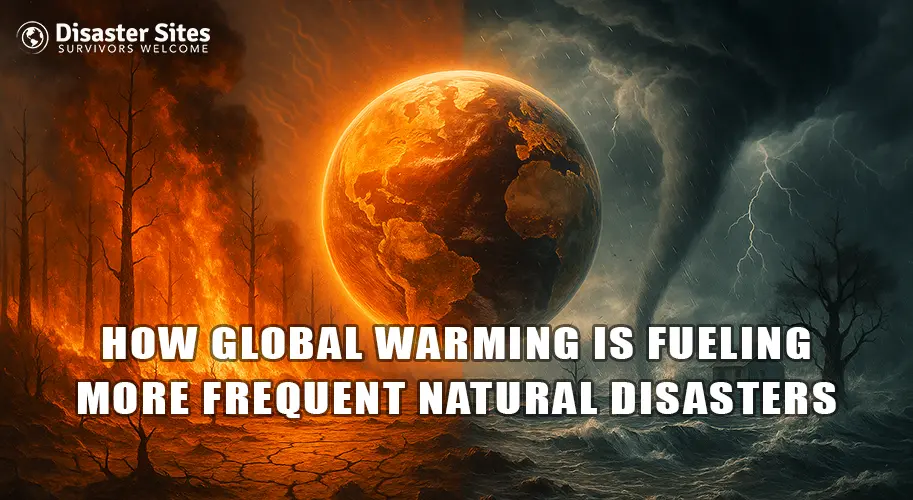We use cookies to personalise site content, social media features and to analyse our traffic. We also share information about your use of this site with our advertising and social media partners.
FEATURED
SPONSORED
VERIFIED

Nov 25 -
6 minutes, 26 seconds
-706 Views 0 Comments 0 Likes 0 Reviews

Today, if you are to turn on the news, you are undoubtedly going to hear of a flood, a wildfire, or a hurricane scaring some part of the world. These disasters are no longer unusual, they are becoming shockingly usual. The pattern is Global warming, the rise of Earth's average temperature caused almost entirely by the activities of humans.
Scientists have long since been clear that climate change does not simply mean hotter summers, it interferes with natural systems and causes an increase in extreme weather patterns. Warmer oceans energize storms, rising heat dries out trees and brush until they combust, and melting sea ice, which raises sea levels and floods previously dry areas.
In this blog, we will consider the way global warming leads to more frequent natural disasters, the science behind these changes, and what we must do to help protect ourselves and the planet.
Global warming is simply the slow increase of the average temperature of Earth. A slight variation may not seem problematic but when we alter the temperature by 1°C we are changing the balance of the planet.
This warming has indeed been brought about principally by the greenhouse effect; the gases have trapped heat in the Earth's atmosphere, much like a warm blanket for the planet: carbon dioxide (CO2 being the chief amongst them), methane, nitrous oxide. Man-made activities, such as burning coal for generation of energy, oil and gas, cutting down forests, or just maybe, industrialization abroad, generate these gases faster than nature can dispose of them.
As a result, we are seeing changes to the through mechanisms of the planet, changes to weather patterns, higher frequency and intensities of heatwaves, melting of ice caps and rising sea levels. Warming of the Earth is leading to an increase in natural disasters in terms of frequency and intensity.
For a deeper look at the major climate and disaster issues shaping our world today, check out what significant climate and disaster issues stand out.
With the rising temperatures of the earth, the weather is becoming increasingly unpredictable, with an added measure of danger. Global warming acts as a fuel to the storms, floods, droughts, and wildfires which are forecasted to last longer, and burn hotter.
Where it rains, it rains heavily - mostly because warmer air can hold larger quantities of water vapor; when this rain comes, it comes as event rain, with sudden floods/flooding, and flash flooding. But the heat that supports this massive rainfall also dries out the soils and vegetation, which creates an environment for droughts and wildfires. The warmer oceans are also strengthening hurricanes , cyclones and similar systems, making them stronger than ever.
The proof is there for all to see. A few recent climate studies suggest that the episodes of extreme weather have doubled almost in the past few decades. Global warming is not a faraway problem anymore. It is already affecting us, from extreme heat in Europe to big floods in Asia.
You can see the real-world effects of extreme weather in Africa in our article on the climate crisis in Africa 2025 - floods, heatwaves, and food crisis.
Not all disasters felt the effects of global warming in the same manner. Some disasters will feel disastrous effects considering that they rely more directly on rising temperatures and/or shifting weather patterns. Here is how specific natural disasters magnify disaster through global warming:
Learn more about how climate change is driving extreme events like wildfires, floods, and droughts in our post on wildfires, floods, and droughts: how climate change is fueling natural disasters.

“To assist disaster survivors by providing a source for them to come together in time of need, to aid in the listing of events, information and other forms of assistance, and continuing support through the recovery process.”
Share this page with your family and friends.